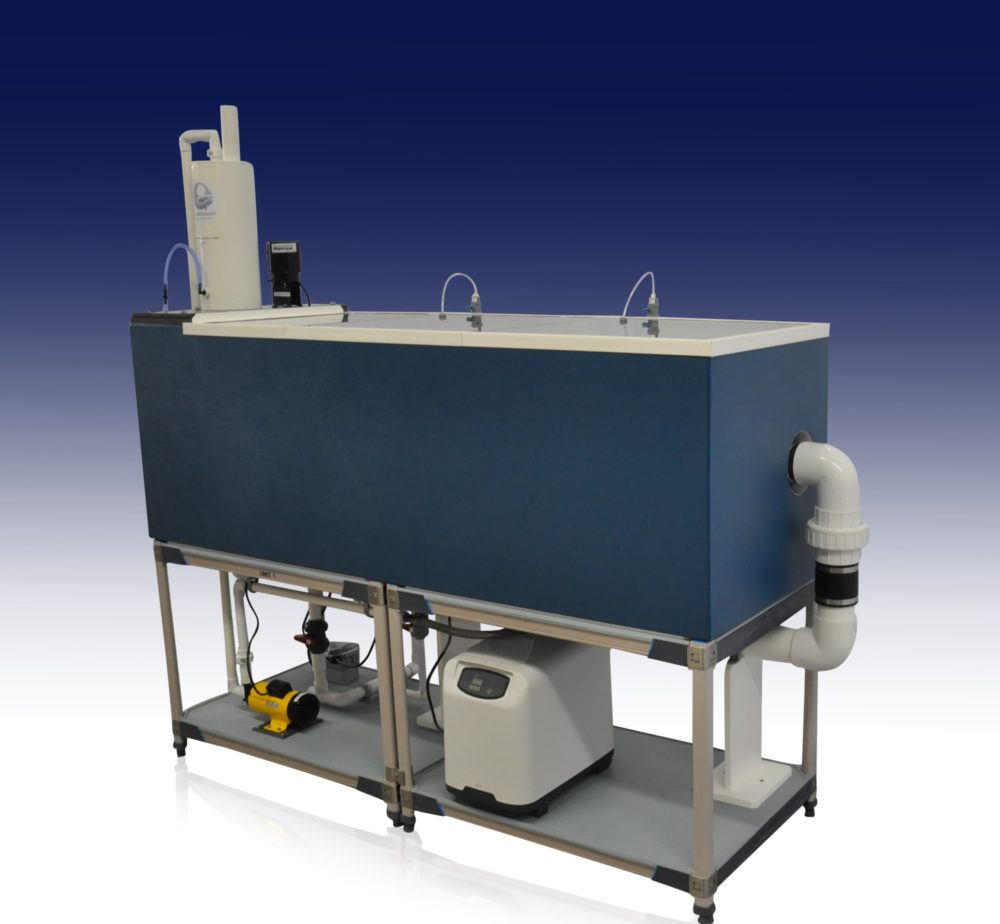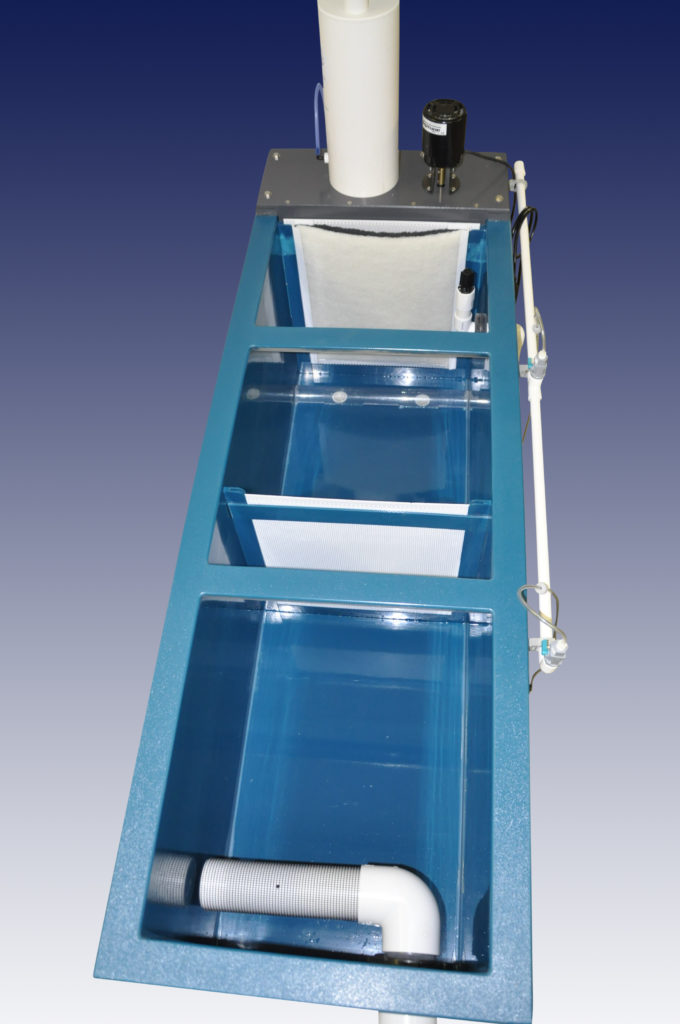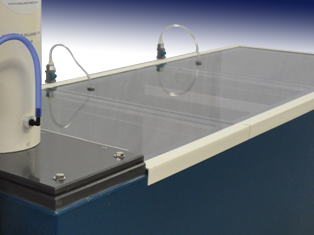Wilfrid Laurier University – Fish Holding Tank
Wilfrid Laurier University – Fish Holding Tank
| Institution: |  |
| Location: |
Waterloo, ON, Canada
|
| Contact: | Dr. Andrea Lister |
| Equipment: | Fish Holding Tanks |
| The Fish Holding Unit is composed of a holding tank, a three-stage filtration system and a temperature control system driven by a propeller pump. This pump is equipped with a vertical propeller that circulates the water in the holding unit (1.32 cm/s speed). | |
| Habitats: | Fresh water, Seawater ; |
| Temperature: | 2 to 30 + 0.5 °C |
| Description: | Wilfrid Laurier University – Fish Holding Tank
The holding tank has a volume of 424 Litres. It is constructed of non-toxic plastic and has a lid. The tank is supported by a rack made of fibreglass and plastic. The three stage filtration system consists of:
The pad’s polyester fibres provide ideal mechanical filtering. The bio-filtration filter medium is made of ceramic with pores ranging from 60–300 µ, making it optimal for bacteria colonization. Its structure is highly penetrative and hydrophilic which allows bacteria to colonize deep within the medium, enabling both aerobic nitrification and anaerobic de-nitrification. The crushed coral filter utilises aragonite which has an unusually high buffering capacity. This contributes to the maintenance of a desirable level of pH. Water circulation is effected by a Quiet Drive propeller pump. The degasser removes CO2 and at the same time aerates the water. The control of the temperature of the unit is accomplished by the TR-20 temperature controller with:
|
| Water recirculation level: | 99.7% |
| Work done: |
|
Wilfrid Laurier University – Fish Holding Tank
Flow circulation
The filtration pump takes water from the bottom of the tank, through the TR-20 temperature controller and into the degassing column. This column is made of 16’’ degassing nodules followed by 1 L of crushed coral and of 3 L of ceramic rings (biofilter).
The circulation pump feeds the water through a 3’’ pipe under the tank. This water is returned to the holding tank at a flow of 237 lpm. The action of the current of water together with the sweeping action caused by the movement of the fish carries the feces and uneaten food to the space at the base of the grid. Here they can easily be removed by means of a feces trap. Note that the grid allows the section containing the fish to be divided into two sub-sections – hence it is designated the dividing grid. Cleaning of the feces is carried out by opening the feces trap valve (one valve per feces trap) situated near the bottom of the tank.
Once through the section containing the fish, the water passes through the pad filter and a second grid to end up in the pump section.
The water level and the water make up adjustments are controlled manually by adjusting the valve in the filtration section.





